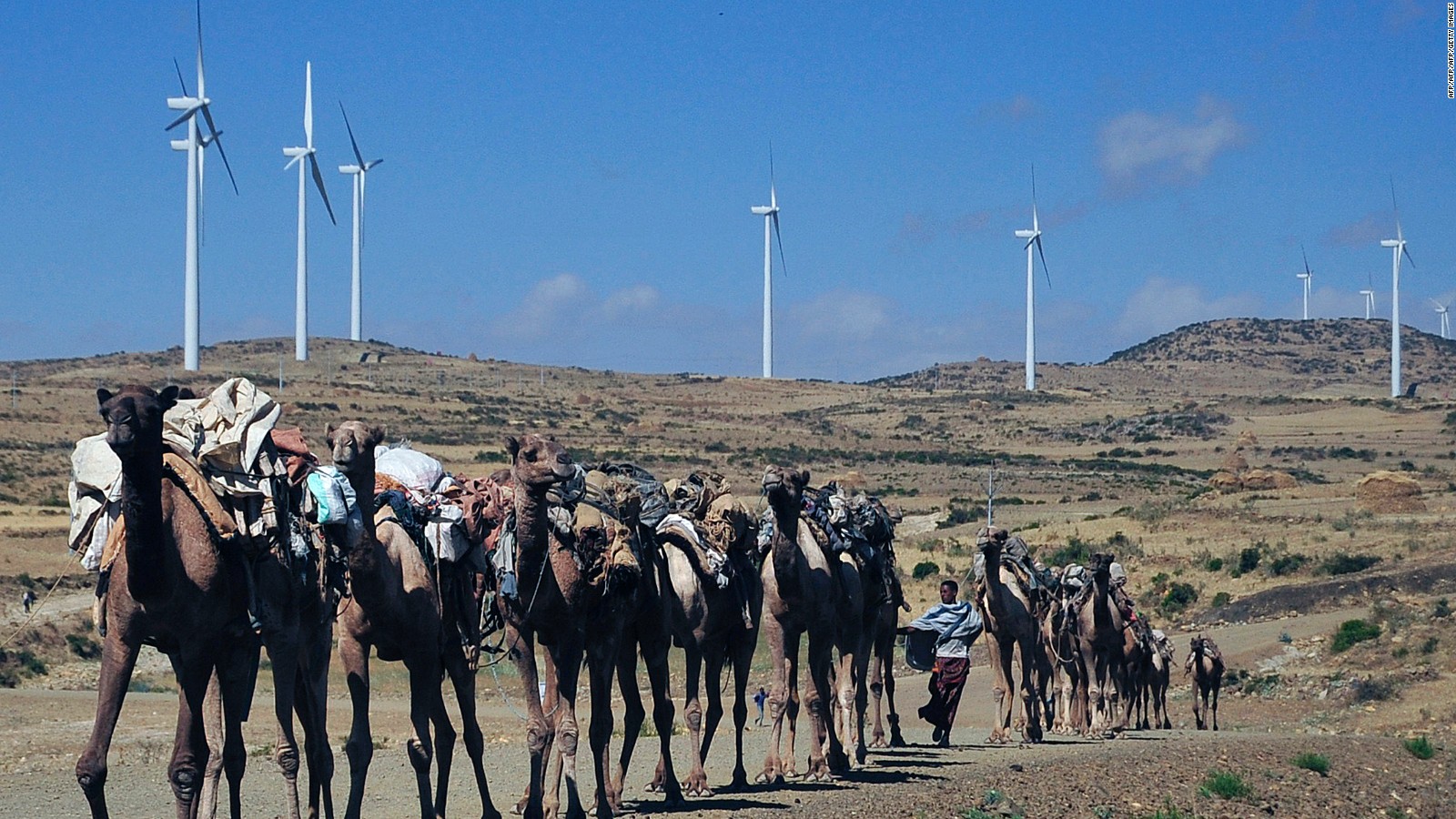Building on decade-long double-digit growth catalyzed by enormous government spending on infrastructure, the size of the Ethiopian economy, in terms of Gross Domestic Product (GDP) measurements, will reach 69.2 billion U.S. dollars, according to projections the International Monetary Fund (IMF) made for 2016. In 2015, its GDP stood at 61.6 billion dollars.
Kenya’s GDP, on the other hand, is expected to rise to 69.1 billion U.S. dollars in 2016, up from 63.4 billion dollars in 2015.
If the projections turn out to be true, Ethiopia, hailed by pundits as an “African lion”, will surpass Kenya. Though the possible win would be by a small margin, Kenyans have echoed that Ethiopia is surely becoming a new superpower in the region.
It is not hard to understand why the possibility of Ethiopia coming at the forefront has caused a stir among Kenyans.
Back in 2000, Kenya had a 70 percent lead over Ethiopia. Kenya’s GDP then stood at 14 billion U.S. dollars while Ethiopia’s output was somewhere around 8 billion dollars.
Following the vigorous economic progress the government of Ethiopia has been able to spin over the years, however, the country has managed to catch up with Kenya and close the gap.
BOOMING FOREIGN DIRECT INVESTMENT
An important contributing factor behind Ethiopia’s quick ascension both the IMF and the African Development Bank (AfDB) suggest is the robust foreign direct investment (FDI), complementary to the government’s huge investment.
According to the Ethiopian Investment Commission, China leads the foreign investment pack followed by Turkey and others.
David Shinn, former U.S. Ambassador to Ethiopia, who actively follows events about the relationship of China and Ethiopia, wrote on his blog that in 2014 China’s investment in Ethiopia reached a cumulative one billion U.S. dollars.
The diplomat went on to point out that the trade and investment relations the two countries have established over the course of the years registered a booming growth.
For instance, Shinn said “in 2000, China-Ethiopia trade was only 88 million U.S. dollars. Since 2006, China has been Ethiopia’s largest trading partner. Trade exceeded 2 billion U.S. dollars in 2013, although the trade balance heavily favours China. One of China’s six special economic zones in Africa has been established in Ethiopia.”
The diplomat also noted that Chinese companies are building most of the roads in Ethiopia. For example, the first phase of the Ethio-Djibouti railway project, the telecommunications infrastructure, and the light rail system in Addis Ababa. By 2014, the cumulative value of Chinese contracted projects exceeded 22 billion U.S. dollars, Shinn said.
DAUNTING CHALLENGES
Though steady FDI inflows have enabled Ethiopian economy to develop in a progressive manner, there are doubts over whether the country can sustain growth for long, what with the country’s political, social and climate challenges.
The buildup of the political discontent has led to clashes and deaths. Despite a six-month state of emergency announced last October, worries over whether the government can properly address anger over land and other rights still linger.
The incidents have affected foreign businesses as many companies were looted and set alight. The country’s FDI is expected to suffer a blow if the situation drags on.
In addition to the political frictions, the ongoing droughts and harsh climate conditions have significantly burdened the economy, forcing the government to shift considerable resources from economic activities to emergency aids.
Back in 2015 to 2016, some 10 million people in Ethiopia, 10 percent of the population, was in need of emergency food aid. The country was forced to import 1.6 million tonnes of wheat and lifesaving supplements.
This year again, some five million people have fallen short of food and require 950 million U.S. dollars emergency food aid.
The government of Ethiopia has been looking for donors and calling the international community for assistance, which, in many instances of the drought season, ended up short of expectations.
Also, the country has to do more in reducing the prevalence of poverty in absolute terms.
According to the World Bank, some 22 million people in Ethiopia are believed to be currently living under absolute poverty level.
GROWTH POTENTIAL
Despite these challenges, the Ethiopian economy remains buoyant and growth projections of the World Bank and the IMF indicate more positive outcomes for the years to come.
Both institutions agree that Ethiopia will maintain fast economic growth, with a projected annual rate at seven to nine percent.
Though Ethiopia may grow faster, it is not the richer of the two, as its per capita GDP remains way below that of Kenya.
The current GDP per capita stands at 686 U.S. dollars, with a possibility of reaching 759 dollars this year, whereas Kenya’s GDP per capita hangs around 1,434 dollars and is expected to increase to 1,500 dollars by the end of 2017.
One of the reasons is the growing demographic pressure Ethiopia has to live with.
Ethiopia, the second most populous nation on the African continent, has an estimated population of 100 million, doubling that of Kenya.
Ethiopia’s big population, however, is considered a blessing in disguise. Many investors see huge consumer base and market potential, which can shore up Ethiopia’s future growth. Enditem
Source: Birhanu Fikade, Xinhua/NewsGhana.com.gh




